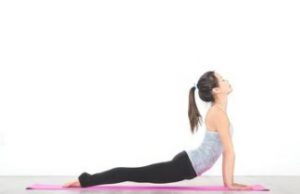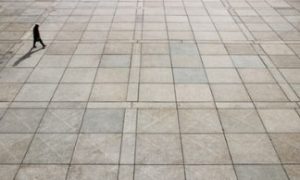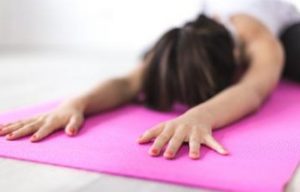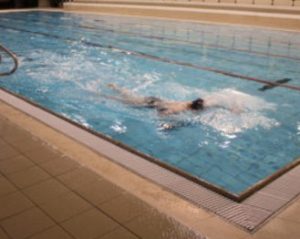When our muscles are working in sync with each other is when our bodies function at their absolute best. Weak muscles, and the pelvis and core in particular, can at times lead to injury or back pain. Low back pain may interfere with your daily activities. However, research shows that strengthening exercises might increase function and reduce pain.
The best approach to take to prevent low back pain is to live a healthy lifestyle. Avoiding risky activities, building strength and minimizing weight gain help to minimize low back pain.
A review published in JAMA International Medicine in February 2016, showed that exercise may reduce the risk a person has for developing lower back pain, in addition to the need for someone to take sick day that relate to lower back pain. Performing back exercises on a regular basis can also help to build muscles, and help them support your spine better. Experts recommend that you 15 to 30 minute back exercises sessions, two to three times per week.
What Causes Lower Back Pain?
The most common causes of lower back pain are the result of one of the following:
- Neurological disorders
- Spondylolisthesis
- Infection
- Cancer
- Disc herniation
- Spinal stenosis
- Compression fractures
- Degenerative changes
- Nerve injury
- Muscle strain
- Muscle spasm
Why It Exercising for Lower Back Pain Important?
Due to the fact that lower back pain is cause by so many different causes, there is no way there can possibly be one treatment that will work for every condition. Every patient needs to have care that considers their overall health and all aspects of their body. For example, when a patient is having to deal with effects related to long-term spinal stenosis is going to have different needs compared to somebody whose pain comes from an injury or arthritis. However, most kinds of lower back pain appear to respond favorably to holistic approaches like exercises for pain management.
Exercising for lower back pain may:
- Reduce your pain
- Improve your quality of life overall
- Reduce mental health issues that pain patients commonly have, like depression
- Prevent future pain
Start Back Exercises with Some Stretching First
Stretching improves the flexibility within the muscles supporting your back. This flexibility can be quite important to prevent lower back pain whenever the spine gets subjected to extreme amount of stress.
The following are some stretches you can try out:
Pelvic tilt. Lie down on your back and bend your knees. Place your arms at your sides and our feet flat on the floor. Press the base of your spine to the floor and hold it for a couple of seconds, with your hips tilted up, and then relax. Repeat this 5-10 times.
Double knee to the chest. Lie down on your back. Bend our knees and have our feet flat on the floor. Just underneath your knees cup your hands and pull your knees gently towards your chest. Hold it for 5 seconds, and then lower your legs back to the start position. Repeat this 5-10 times.
Side stretch. Starting from the standing position, stretch one of your arms over your head while you are bending your body over to the opposite side. Your hand should be kept on your waist. Use a flowing motion to perform the stretch, without any twisting or jerking your body. Hold it for 5 seconds. Repeat 5-10 time on each side.
Back arch. Stand up straight with your palms on your lower back and your feet shoulder-width apart. Bend backward, exhale and support your back using your hands. Make sure your knees are kept straight. Hold it for 5 seconds. Repeat 5-10 times.
5 Best Exercises to Do for Lower Back Pain
1. Walking
Among the best, low impact exercises to do for lower back pain is just to walk. The best thing about walk is that neither a dedicated space or special equipment is needed. The only thing that is needed is a pair of supportive, comfortable shoes and the route that you want to take. If you haven’t ever been active previously you can begin slowly by just walking around your neighborhood. Add distance continuously to your walk until you are able to walk a mile or more without it being a struggle. It is also possible to set your own pace while you are increasing your stamina. You can even walk if you don’t happen to live in an area with sidewalks or when the weather is too cold or hot. You can just go to a local mall and do walking there instead.
2. Strength training
Quite often connective tissues or joints are affected by lower back pain, so therefore increasing your muscle strength around those areas may help to reduce the effects of this pain. Strength training brings up images of muscle bound body builders however it doesn’t have to be viewed this way at all. For example, your core workouts may include sit-ups for strengthening the back muscles and help with alleviating low back pain. A good start is to use body weight, like push-ups, but small weights can also be added to other exercises that will help with strengthening your body. Take time and learn about safety for weight training and understand that you don’t have to keep pushing yourself until your body hurts. We will be discussing core exercises that you can do at home for lower back pain later on in this article.
3. Yoga
You really can’t do much better than yoga for a complete body, mind and spirit workout. This eastern meditative practice is becoming increasingly popular in the U.S. and is very accessible. Yoga has so many levels and beginner’s classes can help people new to yoga learn the basics when it comes to breathing techniques and poses. Programs are offered by most gyms or community centers. You might also be able to find inexpensive or free yoga classes within your area. Another benefit that yoga has it that it can help with relieving stress and learn how to stay relaxed.
4. Swimming
For people who are struggling with lower back resulting from joint conditions, swimming can be very useful since it is very low impact. Since bodies are buoyant when they are in the water it means your joints aren’t subjected to the same pressure that they are when you are running or walking. If you aren’t into swimming laps you can try taking a water aerobics class. Frequently they will be offered through an adult activity organization or community pool in your local area.
5. Water aerobics
Water aerobics is similar to aqua jogging. It is easy on the back and low impact. A majority of water aerobics classes involve skipping, hopping and marching while waist deep water and hoisting Stryofoam, light dumbbells overhead.
Lower Back Exercises at Home
1. Bridges
The large buttocks muscle is called the gluteus maximus. It is one of your body’s strongest muscles. It is responsible for hip movement, including squat and other hip extension activities. When the gluteus muscles are weak it may contribute to back pain. That is due to the fact that they are critical hip joint stabilizers, and also the lower back during activities such as walking.
Lie down on the ground. Your feet should be hip-width apart and flat on the floor. Place your hands next to your sides, press your feet to the floor while lifting your buttocks from the ground slowly until body is in a straight line. Your shoulders should be kept on the floor. The lower back down. Take a rest for 1 minute. Repeat this 15 times. Do 3 sets.
2. Drawing in maneuver
The muscle wrapping around the midline is the transverse abdominis. It helps with supporting the abdomen and spine. It is very important for prevent injuries during movement and to stabilize the spinal joints.
Lie down on the ground. Your feet should be hip-width apart and flat on the floor. Relax your hands at your sides. Take in a deep breath. Then breathe out and pull in your bellybutton to your spine, without tilting your hips engage your abdominal muscles. Hold for 5 seconds. Repeat this 5 times.
3. Lying lateral leg raises
Your hip abductor muscles are what help raise your leg over to the side, away from your body. In addition, they help with supporting the pelvis while standing on one leg. Whenever those muscles are weak, it may affect mobility and balance. Instability may cause lower back pain.
Lie down on one side. Make sure your lower leg is bent on the ground slightly. Engage your core through drawing your bellybutton to your spine. Then raise your top leg but keep the rest of your body still. At the top hold for 2 seconds. Repeat 10 times. Then repeat on the other side. Perform 3 sets per side.
4. Supermans
Your back extensors run along your spine. What they do is help you with maintaining an upright position, enable you to arch your back, and support your pelvic bones and spine. Don’t do this exercise until you are further evaluated if the exercise makes your back pain even worse. Your doctor might need to rule more serious back pain causes out.
Lie down on your stomach. Your arms should be extended out in front of you with your legs out. Lift your feet and hands off of the ground around 6 six inches, until you start feeling a contraction within your lower back. Slightly lift your bellybutton from the floor to engage your core muscles. With your feet and hands reach away. Make sure that you look at the floor while doing this floor in order to avoid straining your neck. Hold it for 2 seconds. Return back to the starting position. Repeat 10 times.
5. Partial curls
Your abdominal muscles play a critical role when comes to supporting your spine. Having strong abdominal muscles will help you with maintaining correct hip alignment. That can contribute to your core’s overall stability and strength.
Lie down on the ground. Keep your knees bent and your feet flat on the floor. Cross your hands across your chest. Take in a deep breath. As you are breathing out, pull your bellybutton towards your spine to brace your abdominal muscles. Lift your shoulders slowly off the ground a few inches. Try keeping your neck in line with your spine rather than rounding, in order to avoid pulling up using your neck. Go back to the starting position. Repeat this 10 times. Do 3 sets.
Conclusion
Of course it is perfectly fine to suggest that exercising for lower back pain is an excellent addition to the pain treatments you are doing currently. However, if you aren’t currently active, what should you do if you have pain that is preventing you from beginning to exercise? If you aren’t active currently there are a couple of basic things that you can do in order to get yourself moving.
The best way of treating a chronic pain condition is recognizing your whole body is connected. It also relies on having a positive mental outlook. Your physical experiences can also be affected by your mood. Exercising for lower back pain is an important aspect of caring for your lower back pain. However, there are other options that are available.
You should always consult with a doctor before you start a new exercise program. If you’ve suffered a traumatic injury such as an accident or fall, always seek medical assistance and get evaluated in order to rule any serious conditions out. If those exercises cause an increase in your back pain, stop and get medical help. Stay within your physical limits. When you do too much, too quickly it can increase your back pain and your healing process can be slowed down.









